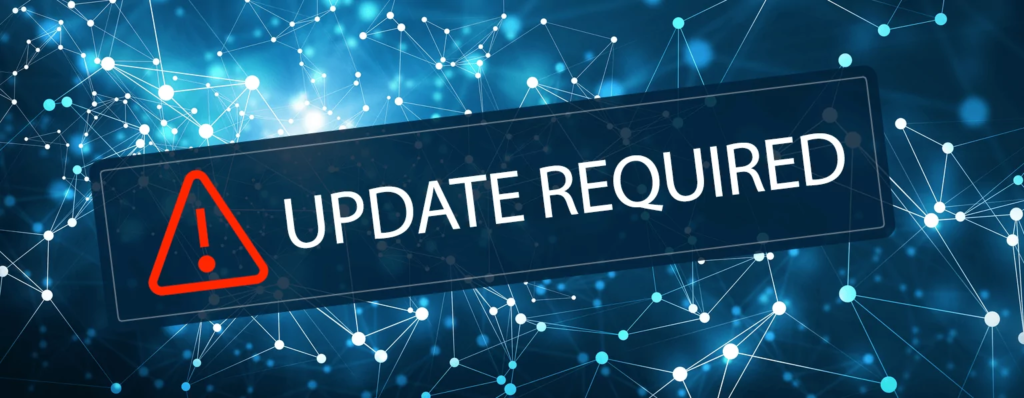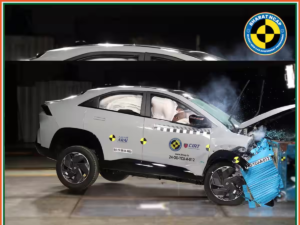Vehicle owners are often not aware a software update is needed unless its in the form of a recall. Traditionally, software updates were performed in person at service centers. Many times, vehicle owners were seemingly unaware an update was even available.
But with today’s modern connected vehicles, over the air (OTA) updates enable manufacturers to push updates to your vehicle while you sleep.
In fact, new cars have more technology than ever before, with computers controlling virtually every aspect of their operation.
And just like your laptop or your smartphone, sometimes your vehicles software needs updating too.
But how do I know if my car needs a software update? Let’s dive into the details.
What Does A Software Update Do On A Car?
Vehicle manufacturers for a variety of reasons release software updates to correct bugs, improve vehicle performance, and even add new features. Perhaps the most important of all these updates–critical software patches to protect against vulnerabilities. Vulnerabilities may allow hackers to gain access to vehicle software and control vehicle systems.
How To Find Out If Your Vehicle Has The Latest Software?
You can often check for software updates through your car’s infotainment system. Look for a software update or system information section.
Alternatively, give your local car dealership a call and have them check your VIN number. They will be able to tell you if your vehicle is up to date with latest software. You can even quickly check to see if your vehicle has a software recall by using our car recall look-up tool.
Also, performing a problem trends search will help you determine whether other car owners are encountering the same issues as you are.
Additionally, the newest tech from automakers such as GM, Ford, Tesla, and others provide in-vehicle alerts regarding available updates.
Vehicle owners can even select a preferred time for these updates to take effect–such as the middle of the night while their vehicle is parked.
Do You Need Software Updates On Your Car?
Yes, vehicles rely on complex software to maintain and perform critical functions of an automobile. Software is responsible for monitoring everything from the heated seats to blind spot warning monitors.
If you own an electric car, software updates are critical to the performance and health of the EV battery.
If you drive a gas or hybrid car and you have a check engine light illuminated, you might need an software update.
To find out if there is a software update for your car, simply check with your car’s manufacturer or by using our car recall look-up tool.
Are Vehicle Software Updates Free?
Yes, software updates for your car are typically free. This applies if they correct an issue covered by warranty, fix problems with emissions systems or safety recalls.
If your vehicle lacks OTA update capabilities, you will need to take it to your local dealership. The process of installing software updates on your car is simple and straightforward. It’s included in the warranty, so you shouldn’t have to pay anything extra for it.
But don’t wait until you’ve reached the end of manufacturer’s vehicle coverage to have these updates applied to your vehicle. You might find yourself on the hook for some of these software updates.
How Long Does it Take to Update System Software?
Updating your cars software may take anywhere from 5 minutes to 45 minutes to complete. However, cars that rely heavily on software, such as a Tesla Model 3, may require up to 3 hours to update.
In fact, electric cars depend on advanced computers and software to ensure everything is running smoothly.
Do All Vehicles Rely on Software?
Modern cars contain a significant amount of software, and rely heavily to control various aspects of the vehicle’s functionality.

While the amount of software in a modern car can vary depending on the make and model, it’s safe to say that most cars today have thousands of lines of code controlling various functions.
In fact, even if a car does not have features like infotainment systems or driver assistance technologies, it still has software that controls essential functions. Functions such as, the engine management system and the transmission.
Electric cars typically have even more software than traditional gasoline-powered cars due to the complexity of managing the battery, electric motor, and charging systems.
Truth is, electric cars require software to manage battery charging and discharging, regenerative braking, and energy usage optimization.
And electric cars often have more advanced driver assistance and autonomous driving features, such as self-parking, autopilot, and advanced collision avoidance systems.
These features all require a significant amount of software to operate safely and effectively. And as newer car models continue to incorporate over-the-air (OTA) update capabilities, the likelihood of software updates being delivered in this way will increase in the future.
In the very near future, you won’t need to ask “how do I know if my car needs a software update” as updates will be automatically installed while the vehicle is parked.
What Was the First Car to Receive Over-The-Air Software Update?
The first car to ever offer over-the-air software updates was the Tesla Model S in 2012.
Since then, other automakers have started to offer OTA updates as well. For example, BMW started offering OTA updates in 2018, and Ford in 2020.
Truth is, OTA updates are still relatively new in the automotive industry. Because not all cars on the market today have this capability.
Will Over-the-Air Updates Change the Future of Car Software Updates?
Yes, over-the-air (OTA) updates are likely to change the future of car software updates in a significant way.
For example, numerous new cars are equipped with over-the-air update functionality. However, several auto manufacturers still do not possess the necessary in-vehicle architecture to update software in all domains.
The ability to conduct OTA updates will enable OEMs to preemptively address potential issues by pushing updates before a recall is required – without requiring any action from the driver.
In fact, Tesla has taken the lead in this area. The EV manufacturer sends out OTA updates roughly once every four weeks.
Other automobile manufacturers are likely to follow suit in adopting OTA updates to save customers the trouble of visiting dealerships for fixes, while also reducing costs for the manufacturers.
For car owners, this means recall fixes may be fixed while you sleep.
How Do I Know If My Car Needs A Software Update FAQs
What Are Car Software Updates?
Car software updates are updates to the vehicle’s operating system, designed to improve performance, add new features, and address any software-related issues.
How Often Should I Expect Software Updates For my Car?
The frequency of software updates can vary depending on the manufacturer and the specific vehicle model.
Can I Install Car Software Updates Myself?
No, most car software updates need to be performed by authorized dealerships or service centers. It’s important to follow the manufacturer’s instructions and have a professional handle the update to ensure it is done correctly.
Are Car Software Updates Free?
It depends on the manufacturer and the specific circumstances. Some software updates may be covered under warranty or provided free of charge, while others may require a fee. Check with your manufacturer or dealership for more details.
What Happens if I Don’t Install a Software Update For my Car?
If you choose not to install a software update, you may miss out on performance improvements, bug fixes, and new features. It’s generally recommended to keep your vehicle’s software up to date for optimal functionality.
Will a Software Update Affect my Car’s Settings or Personal Preferences?
Software updates can sometimes reset certain settings or preferences to default values. However, modern updates are designed to preserve as many user preferences as possible. It’s a good idea to note your settings before an update, just in case.
Can a Software Update Fix Issues With my Car’s Infotainment System?
Yes, software updates often include fixes for known issues with infotainment systems. If you’re experiencing specific problems, it’s worth checking if an update is available to address those issues.
Do Car Software Updates Improve Fuel Efficiency?
While software updates can improve overall vehicle performance, including engine management systems, the impact on fuel efficiency may vary.
Can I Use my Car While a Software Update is in Progress?
No, as it is not recommended to use the car while a software update is being installed.
Will a Car Software Update Add New Features to my Car?
Yes, software updates may introduce new features and functionalities to the vehicle. These can include enhancements to the infotainment system, connectivity options, safety features, and more.
Can I Revert to The Previous Software Version if I Don’t Like The Update?
Typically it’s not possible to revert to a previous software version once the update has been installed. Before proceeding with an update, be sure to check the details of the update and what’s included.
Consult with your dealership if you have any concerns before making an update.
Are Car Software Updates Available For Older Models?
Software updates may be available for older car models, but the availability and extent of updates can vary. It’s best to contact your manufacturer or dealership to inquire about software updates for your specific vehicle.
Can I Download Car Software Updates From The Internet?
Yes, in some cases, car manufacturers may provide the option to download software updates from their official websites. However, it’s still recommended to have the update installed by a professional at an authorized dealership or service center.
Can a Software Update Fix Problems With The Car’s Engine?
Yes, it’s possible a software update can address certain issues related to the engine’s performance, emissions, and other systems controlled by software.
Are There Any Risks Associated With Car Software Updates?
Generally, car software updates are safe, but there is always a slight risk of software glitches or compatibility issues.
Can a Software Update be Done Remotely?
Yes, some car manufacturers such Tesla, GM, Ford, and others offer over-the-air (OTA) updates, which allow software updates to be installed remotely. This eliminates the need to visit a dealership in person.
Check with your manufacturer or dealership to see if OTA updates are available for your vehicle.
Will a Software Update Improve my Car’s Security?
Yes, software updates can include security patches to protect against potential vulnerabilities.
What Should I do if I Encounter Problems After a Software Update?
While rare, if you do experience issues after a software update, contact your dealership or the manufacturer’s customer support for assistance. They can help diagnose and resolve any problems related to the recent update.
Final Thoughts: How Do I Know If My Car Needs A Software Update
Remember, software updates are important not just for your car’s entertainment and navigation system but also for the engine, brakes, and other critical systems.
Make sure you always have the latest update installed to avoid potential problems down the road. Its a good idea to add it to the your maintenance check list.
Have you ever had a problem with your car that could have been fixed with a software update? Let us know in the comments below.

![Read more about the article Best Cars Under 15 Lakhs in India: List of Top 11 & Best Cars Below 15 Lakhs [2024 Updated]](https://carrepairexperts.in/wp-content/uploads/2024/08/image-13-300x138.png)




https://athens-rentalcars.com/de/
Nice question
In my opinion you are mistaken. I can defend the position.
Excuse, that I interrupt you, I too would like to express the opinion.